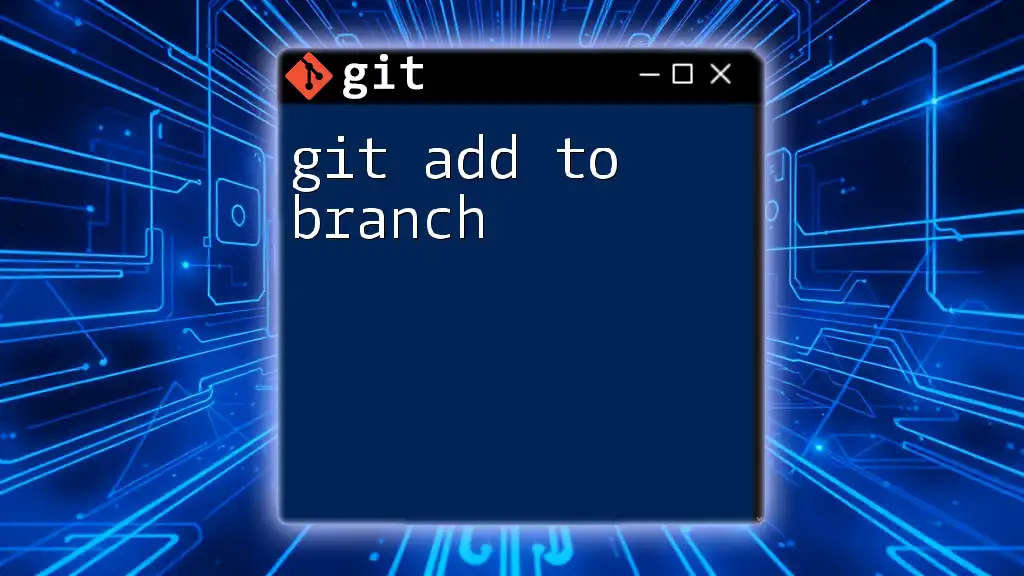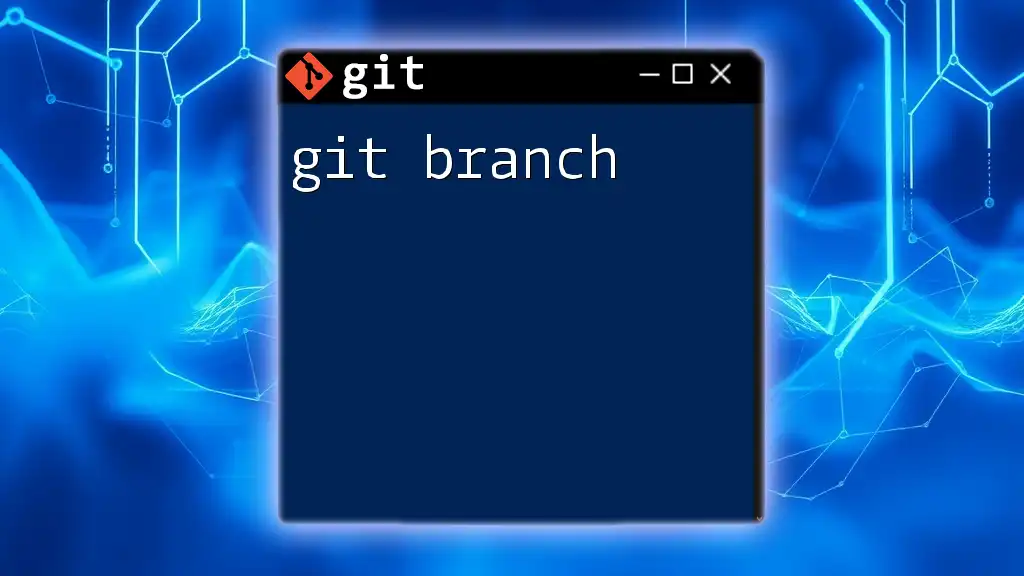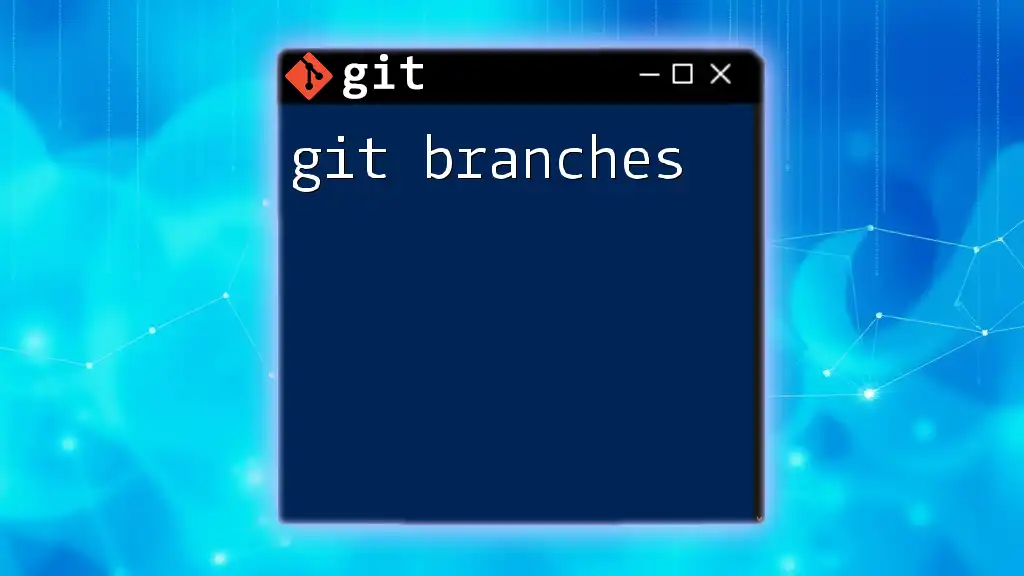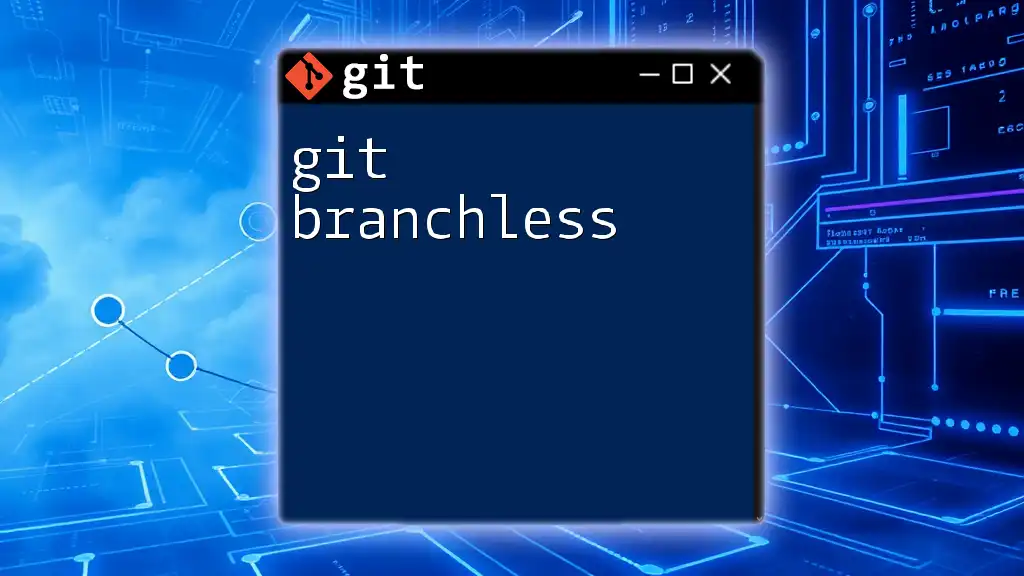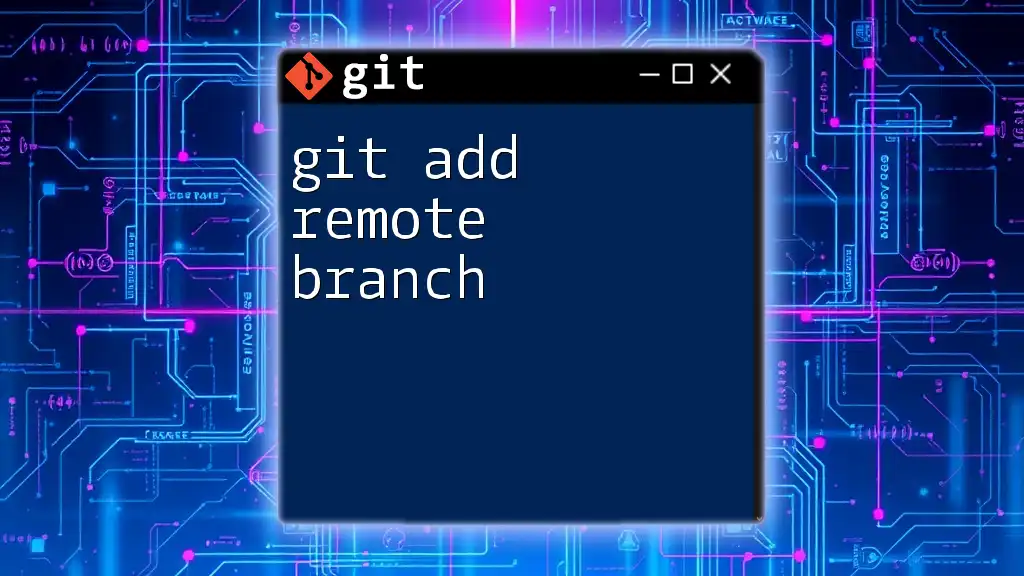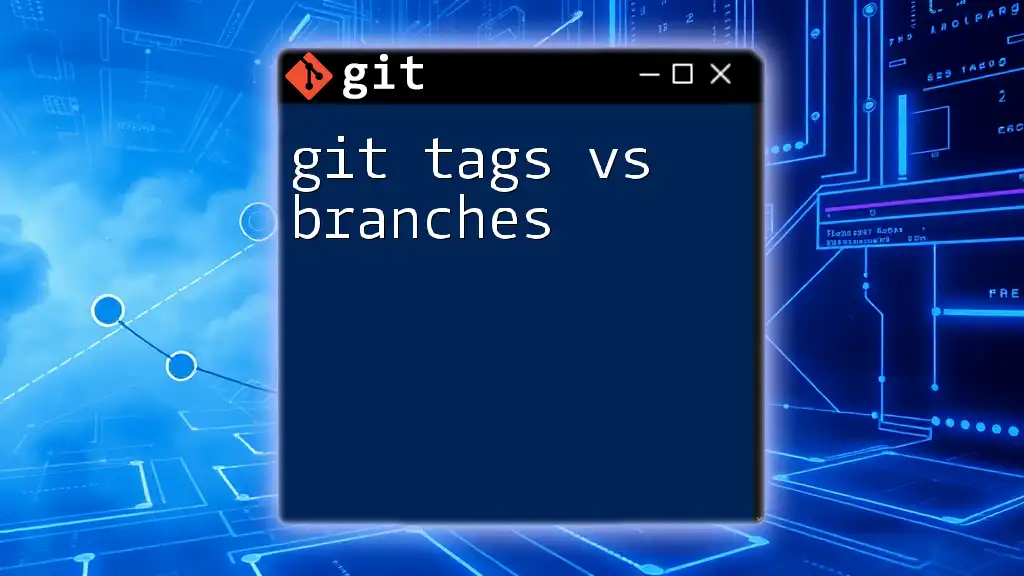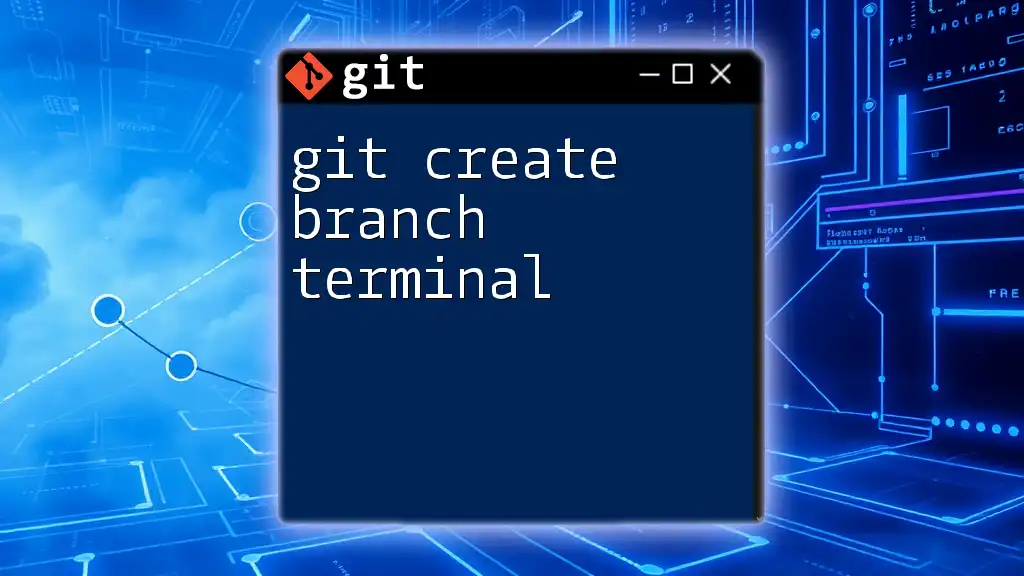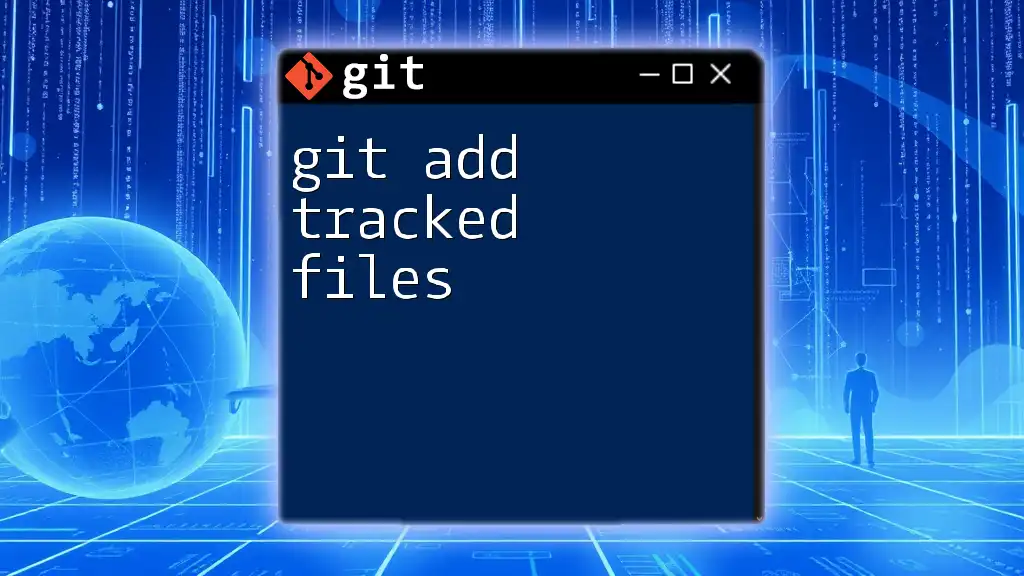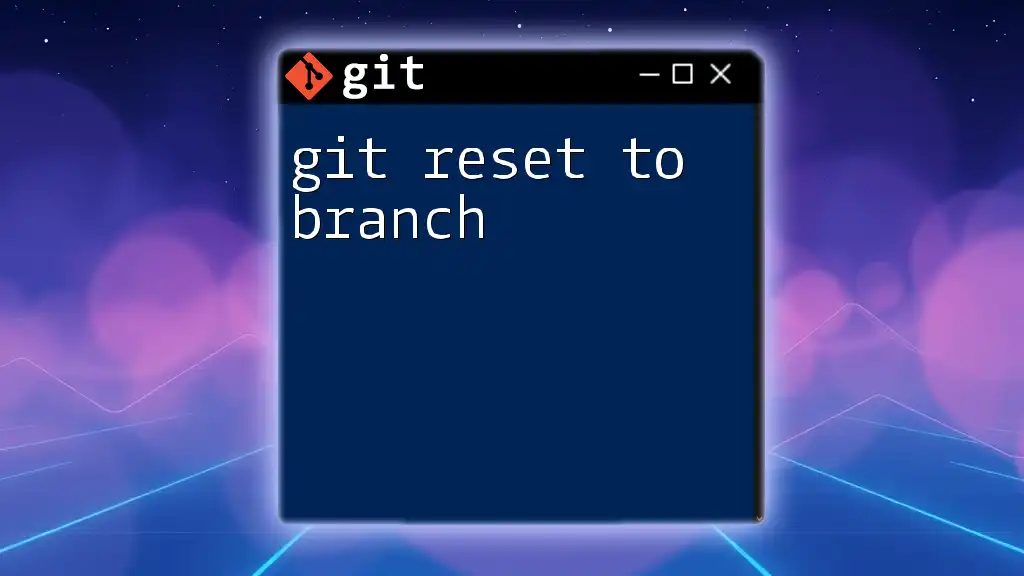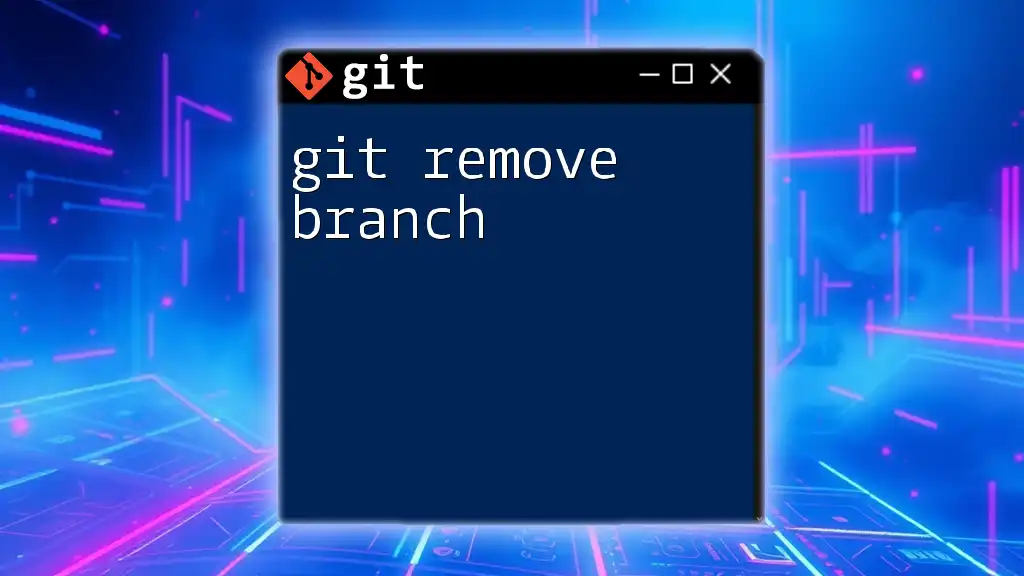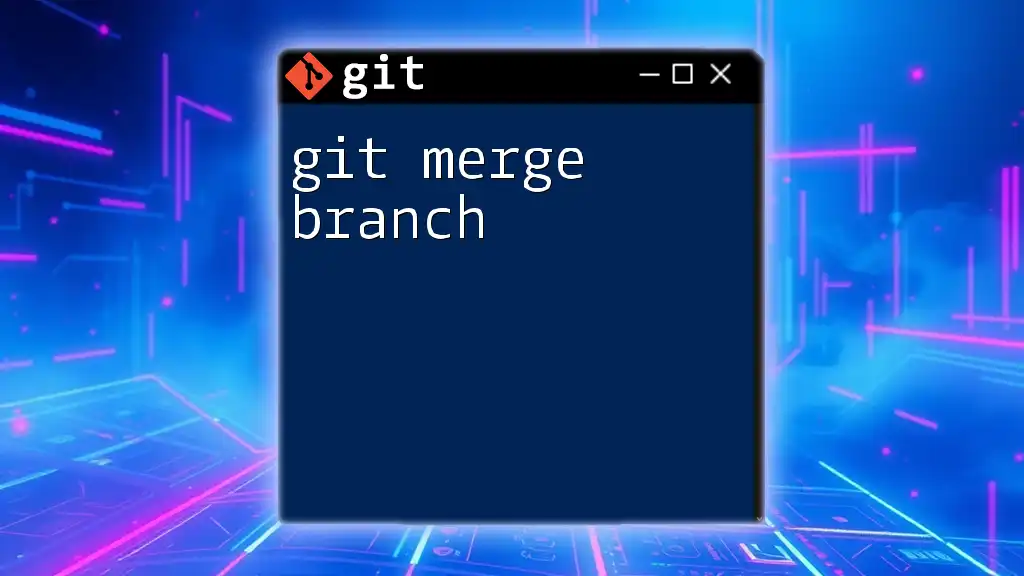To add changes to a specific branch in Git, you must first switch to that branch and then use the `git add` command to stage your modifications before committing them. Here's how you can do it:
git checkout your-branch-name
git add .
Understanding Git States
The Lifecycle of a File in Git
In Git, files can exist in three main states: untracked, tracked, and staged. Understanding these states is crucial when using `git add to branch`.
- Untracked Files: These files are newly created and are not yet part of version control. Git does not manage them until you explicitly add them.
- Tracked Files: These files are already being tracked by Git and can be in various states: staged, modified, or unmodified.
- Staging Area: This is an intermediary space where you prepare changes before committing them. When you use `git add`, you move files into the staging area.
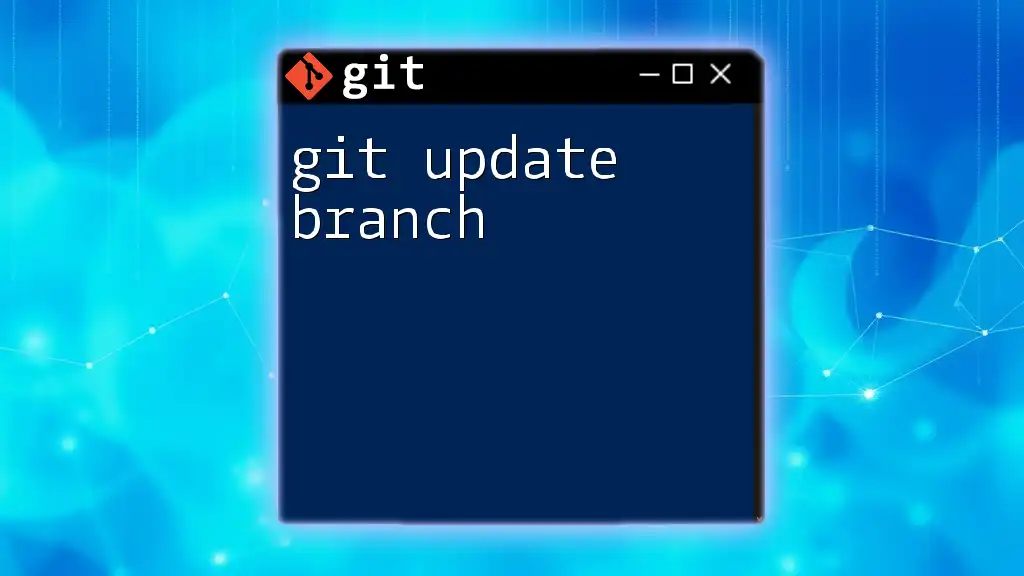
What is `git add`?
Definition and Usage
The command `git add` is your primary tool for moving changes from your working directory to the staging area. It tells Git which changes you want to prepare for the next commit.
The basic syntax is:
git add <path>
This command can be used with specific files or directories, allowing you to target the exact changes you want to include in your next commit.
How `git add` Works with Branches
When working within a branch, it is essential to understand that `git add` affects only the current branch. If you switch branches after adding files, those staged changes don't carry over; they belong to the branch you were on when you invoked `git add`.
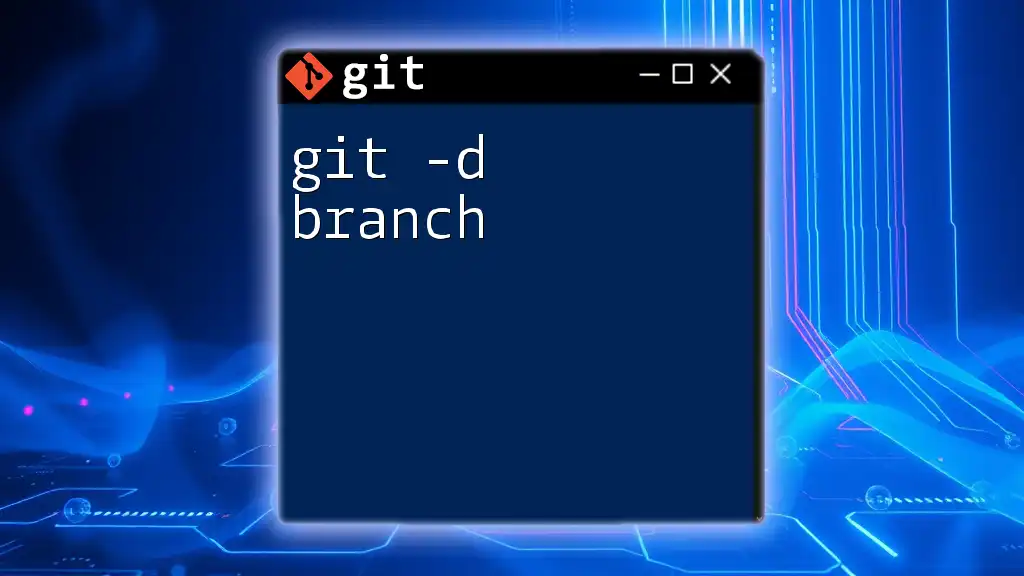
Common Scenarios of Using `git add`
Adding New Files
Creating and adding a new file is one of the most straightforward uses of `git add`. For instance, let's say you create a new text file:
touch newfile.txt
git add newfile.txt
In this example, the `touch` command creates `newfile.txt`, and `git add newfile.txt` stages this new file to be included in the upcoming commit.
Modifying Existing Files
Often, you'll find yourself making changes to existing files. The process here involves simply modifying the file and then staging it:
echo "Hello, World!" >> existingfile.txt
git add existingfile.txt
The first line updates `existingfile.txt`, while the second line stages it for the next commit. This process ensures that only the latest modifications will be committed, keeping your project history clean and organized.
Removing Files
From time to time, you might need to remove a file from your project. You can use `git add` to stage the removal:
git rm unwantedfile.txt
git add unwantedfile.txt
By using `git rm`, you indicate to Git that the specified file should be removed from both your working directory and the staging area. When you then call `git add unwantedfile.txt`, it stages the removal, readying it for the commit.
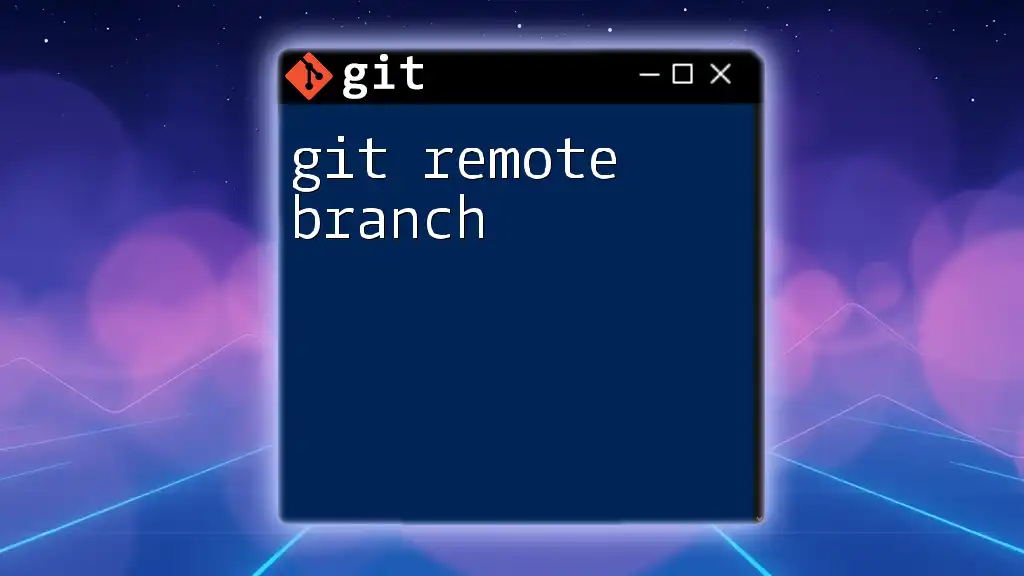
Advanced `git add` Techniques
Adding All Changes
If you want to stage every change made in your project, you can use the following commands. These commands simplify the process:
git add .
or
git add -A
Using `git add .` stages all new, modified, and deleted files in the current directory and its subdirectories. However, it’s essential to be cautious with this command, as it may lead to unintended additions or deletions if you aren't diligent.
Interactively Adding Changes
For more control over what changes to stage, you can opt for an interactive approach using the `-p` flag:
git add -p
This command presents you with each change and allows you to decide whether to stage it. Interactive staging is particularly useful for breaking larger changes into smaller, logical commits.
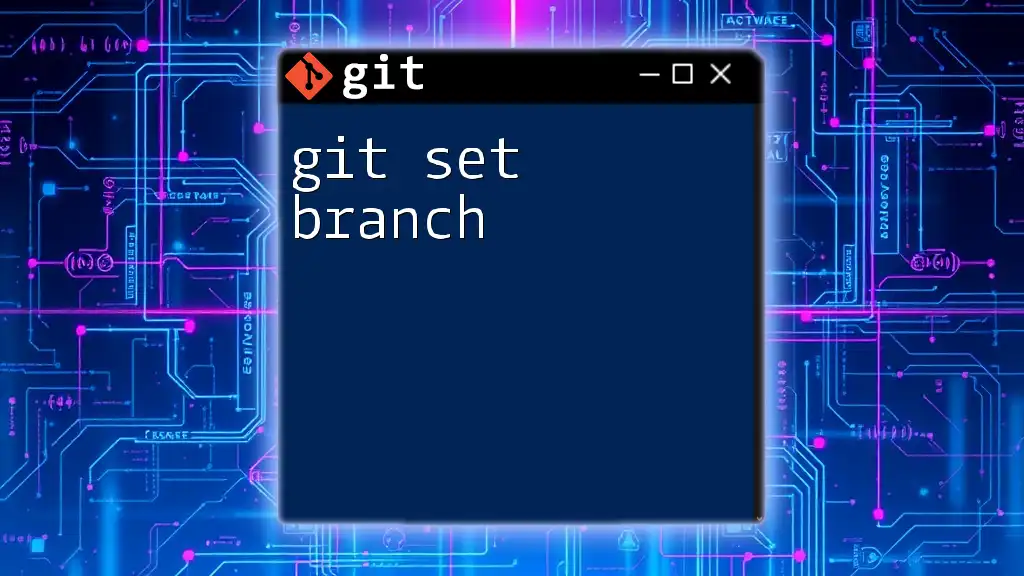
Best Practices for Using `git add`
Commit Often and with Purpose
One of the widely accepted principles in Git is to make frequent commits that encapsulate specific changes or features. This approach enhances the clarity of your project's history and facilitates easier debugging and collaboration.
Use Descriptive Commit Messages
When you commit your changes, take the time to write clear and meaningful commit messages. A good commit message should explain what changes were made and why they were necessary. This practice not only benefits you but also other collaborators who will read these messages in the future.
Leveraging Branches
Utilizing branches effectively can streamline your workflow. Consider creating a new branch for each feature you work on. By consistently adding and committing your changes in a feature branch, you maintain a clean main branch, simplifying integration and collaboration later on.
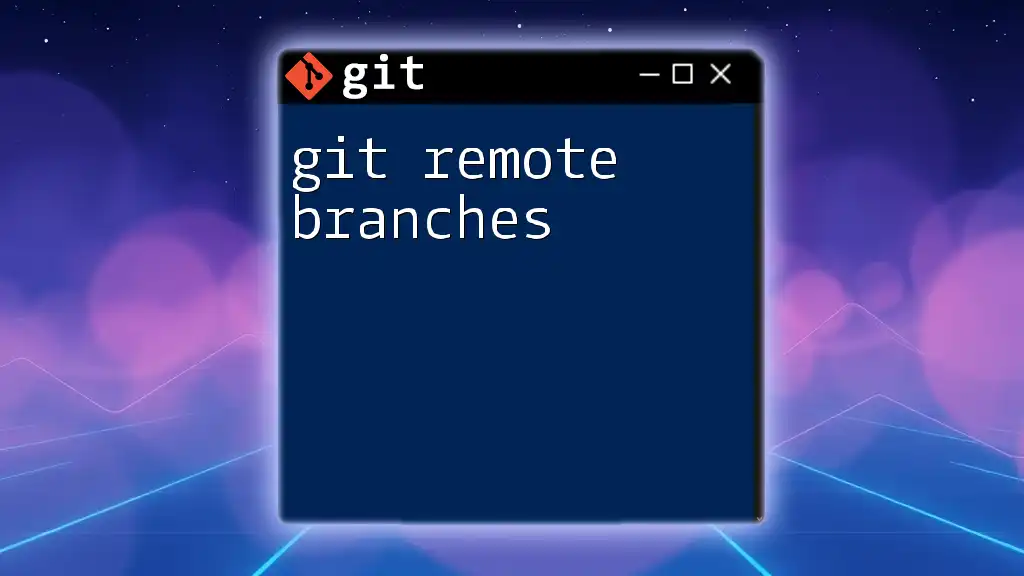
Common Issues and Troubleshooting
Mistakenly Adding Files
Sometimes you may accidentally stage files that you did not intend to commit. When this happens, you can unstage a file using the following command:
git reset HEAD <path>
This command removes the specified file from the staging area while keeping your changes intact in your working directory. It's a simple fix that helps you avoid unintended commits.
Handling Merge Conflicts
Merge conflicts may arise when changes in different branches conflict with one another. After resolving the conflicts within your files, the last step often involves using `git add` to stage the resolved changes before finalizing the merge with a commit.
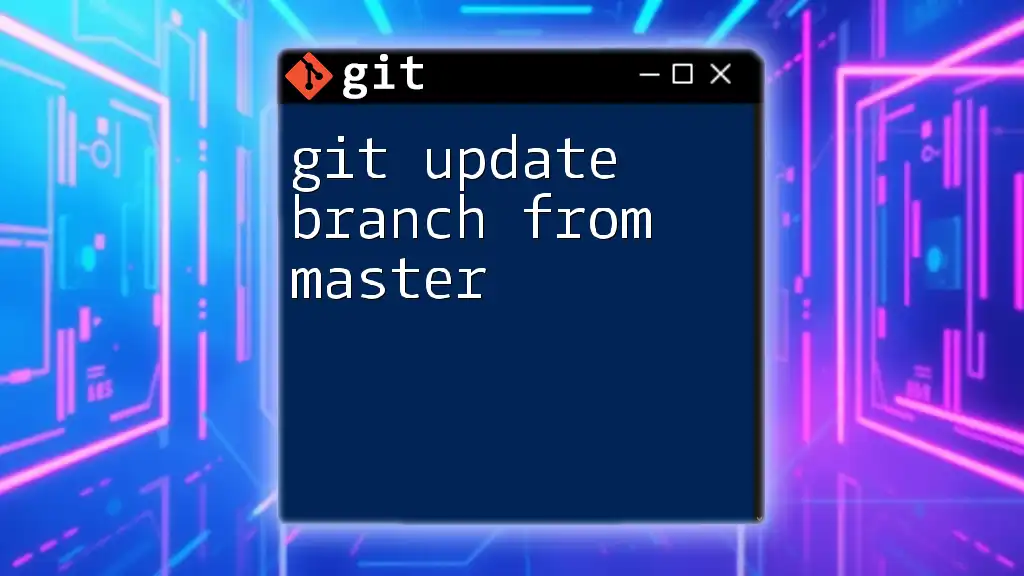
Conclusion
Understanding how to use `git add to branch` is crucial for effectively managing your project's version control. By mastering this command, you put yourself in a better position to handle your workflow accurately and efficiently. Practice using `git add` in different contexts to solidify your grasp on its power and flexibility in your Git journey.

